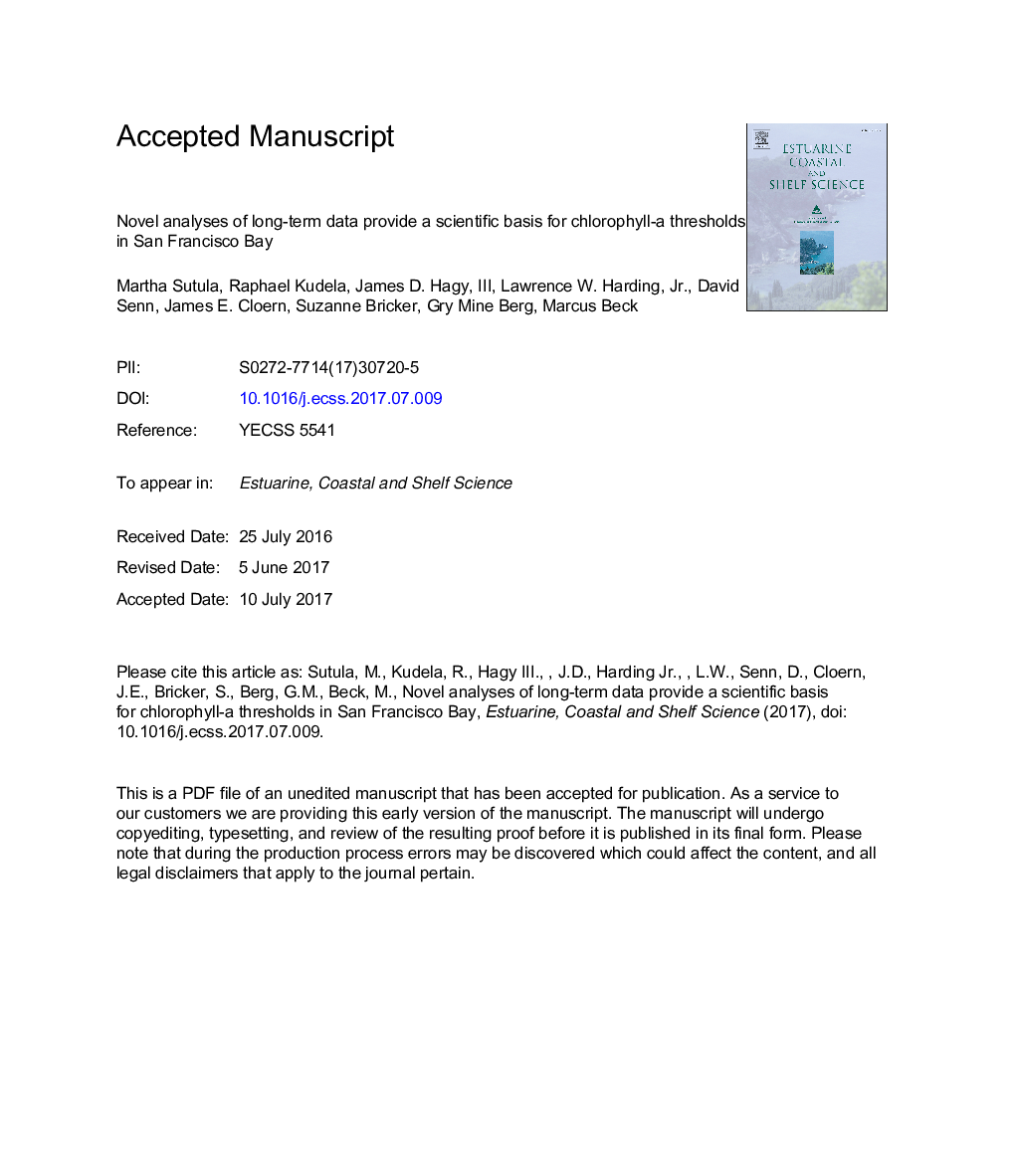| Article ID | Journal | Published Year | Pages | File Type |
|---|---|---|---|---|
| 5765062 | Estuarine, Coastal and Shelf Science | 2017 | 49 Pages |
Abstract
San Francisco Bay (SFB), USA, is highly enriched in nitrogen and phosphorus, but has been resistant to the classic symptoms of eutrophication associated with over-production of phytoplankton. Observations in recent years suggest that this resistance may be weakening, shown by: significant increases of chlorophyll-a (chl-a) and decreases of dissolved oxygen (DO), common occurrences of phytoplankton taxa that can form Harmful Algal Blooms (HAB), and algal toxins in water and mussels reaching levels of concern. As a result, managers now ask: what levels of chl-a in SFB constitute tipping points of phytoplankton biomass beyond which water quality will become degraded, requiring significant nutrient reductions to avoid impairments? We analyzed data for DO, phytoplankton species composition, chl-a, and algal toxins to derive quantitative relationships between three indicators (HAB abundance, toxin concentrations, DO) and chl-a. Quantile regressions relating HAB abundance and DO to chl-a were significant, indicating SFB is at increased risk of adverse HAB and low DO levels if chl-a continues to increase. Conditional probability analysis (CPA) showed chl-a of 13 mg mâ3 as a “protective” threshold below which probabilities for exceeding alert levels for HAB abundance and toxins were reduced. This threshold was similar to chl-a of 13-16 mg mâ3 that would meet a SFB-wide 80% saturation Water Quality Criterion (WQC) for DO. Higher “at risk” chl-a thresholds from 25 to 40 mg mâ3 corresponded to 0.5 probability of exceeding alert levels for HAB abundance, and for DO below a WQC of 5.0 mg Lâ1 designated for lower South Bay (LSB) and South Bay (SB). We submit these thresholds as a basis to assess eutrophication status of SFB and to inform nutrient management actions. This approach is transferrable to other estuaries to derive chl-a thresholds protective against eutrophication.
Related Topics
Physical Sciences and Engineering
Earth and Planetary Sciences
Geology
Authors
Martha Sutula, Raphael Kudela, James D. III, Lawrence W. Jr., David Senn, James E. Cloern, Suzanne Bricker, Gry Mine Berg, Marcus Beck,
